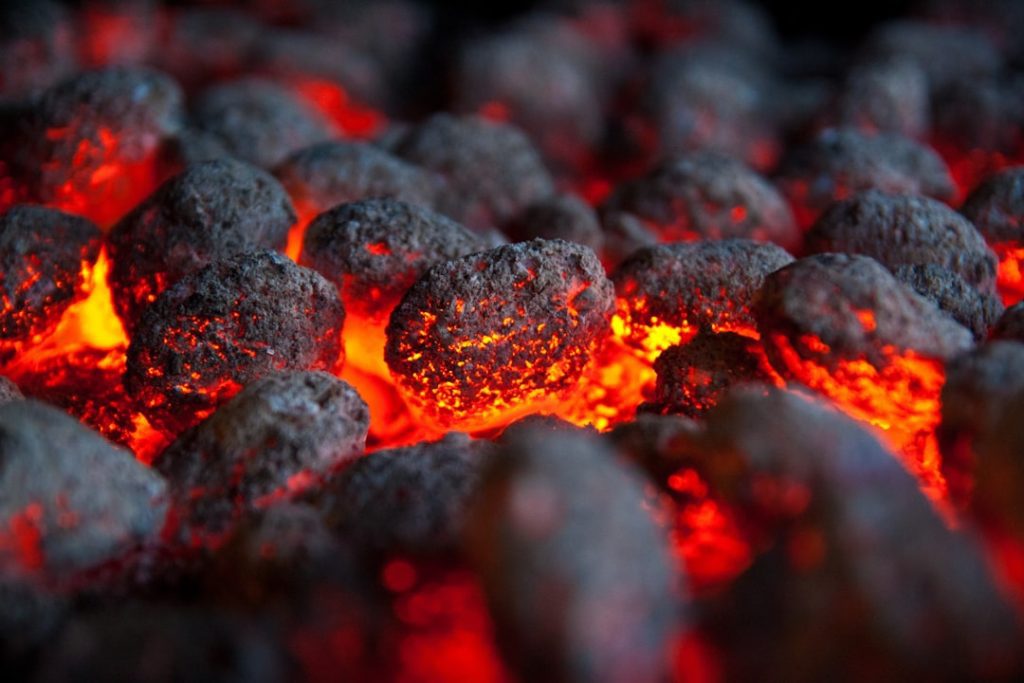Clean coal technologies refer to a collection of technologies that are designed to mitigate the environmental impact of coal usage. These technologies aim to reduce the emission of pollutants and greenhouse gases associated with coal combustion, as well as to improve the efficiency of coal-based power generation. The development and deployment of clean coal technologies are crucial for addressing the environmental concerns associated with coal, which remains a significant source of energy in many parts of the world.
The use of coal for power generation is a major contributor to global carbon dioxide emissions, which are a primary driver of climate change. In addition to carbon dioxide, coal combustion also releases other pollutants such as sulfur dioxide, nitrogen oxides, and particulate matter, which have significant environmental and health impacts. Clean coal technologies seek to address these issues by capturing and storing carbon dioxide emissions, reducing other pollutants, and improving the overall efficiency of coal-based power generation. While these technologies are not without their challenges, they hold great promise for reducing the environmental impact of coal and ensuring its continued role in the global energy mix.
Key Takeaways
- Clean coal technologies aim to reduce the environmental impact of coal-based energy production.
- Carbon Capture and Storage (CCS) technology involves capturing carbon dioxide emissions and storing them underground.
- Integrated Gasification Combined Cycle (IGCC) technology converts coal into a synthetic gas for more efficient energy production.
- Fluidized Bed Combustion (FBC) technology burns coal at lower temperatures to reduce emissions of sulfur dioxide and nitrogen oxides.
- Advanced Emissions Control Technologies use various methods to reduce pollutants from coal-based energy production.
Carbon Capture and Storage (CCS) Technology
Carbon capture and storage (CCS) technology is a key component of clean coal technologies. CCS involves capturing carbon dioxide emissions from power plants and industrial facilities, transporting the captured CO2 to a storage site, and securely storing it underground to prevent it from entering the atmosphere. There are several different methods for capturing carbon dioxide, including post-combustion capture, pre-combustion capture, and oxy-fuel combustion. Once captured, the CO2 is typically transported via pipelines to suitable storage sites, such as depleted oil and gas reservoirs, deep saline formations, or unmineable coal seams.
One of the main challenges associated with CCS technology is the cost of capturing and storing carbon dioxide. The energy and resources required for capturing, transporting, and storing CO2 can be significant, making CCS an expensive option for reducing emissions. However, ongoing research and development efforts are focused on reducing the cost of CCS and improving its efficiency. In addition to cost considerations, there are also technical challenges associated with CCS, such as ensuring the long-term integrity of CO2 storage sites and developing monitoring and verification techniques to ensure that stored CO2 remains secure. Despite these challenges, CCS technology has the potential to play a significant role in reducing carbon dioxide emissions from coal-fired power plants and other industrial sources.
Integrated Gasification Combined Cycle (IGCC) Technology
Integrated Gasification Combined Cycle (IGCC) technology is another important clean coal technology that offers potential environmental benefits. IGCC involves converting coal into a synthetic gas (syngas) through a process called gasification. The syngas can then be used to generate electricity in a combined cycle power plant, which consists of a gas turbine and a steam turbine. IGCC offers several advantages over traditional coal combustion, including higher efficiency, lower emissions of pollutants such as sulfur dioxide and nitrogen oxides, and the ability to capture carbon dioxide for storage.
The gasification process used in IGCC also allows for the production of hydrogen, which has potential applications in fuel cells and other clean energy technologies. However, IGCC technology also presents its own set of challenges, including the high cost of building and operating gasification plants, as well as technical issues related to gas cleanup and syngas conversion. Despite these challenges, IGCC technology has the potential to improve the environmental performance of coal-based power generation and contribute to a more sustainable energy future.
Fluidized Bed Combustion (FBC) Technology
| Metrics | Data |
|---|---|
| Efficiency | 85-95% |
| Operating Temperature | 800-950°C |
| Fuel Flexibility | Wide range of fuels including coal, biomass, and waste |
| Emissions | Low NOx and SOx emissions |
| Particle Size | 2-6 mm |
Fluidized Bed Combustion (FBC) technology is a clean coal technology that offers advantages in terms of efficiency and emissions reduction. FBC involves burning coal in a bed of inert particles at high temperatures, which creates a fluidized bed of ash and gases. This process allows for efficient combustion of coal while reducing emissions of pollutants such as sulfur dioxide and nitrogen oxides. FBC technology can also be used in combination with limestone injection to capture sulfur dioxide emissions, further reducing environmental impact.
One of the key advantages of FBC technology is its flexibility in terms of the types of coal that can be used as fuel. FBC can accommodate a wide range of coal types, including low-quality coals that may not be suitable for traditional combustion technologies. This flexibility can help to ensure a stable and secure fuel supply for power generation while also reducing the environmental impact of coal usage. However, FBC technology also presents challenges related to ash management and the potential for erosion and corrosion in the fluidized bed reactor. Ongoing research and development efforts are focused on addressing these challenges and improving the performance of FBC technology for clean coal applications.
Advanced Emissions Control Technologies
In addition to carbon capture and storage, there are several advanced emissions control technologies that can help to reduce the environmental impact of coal-based power generation. These technologies include flue gas desulfurization (FGD), selective catalytic reduction (SCR), electrostatic precipitators (ESP), and fabric filters. FGD technology involves removing sulfur dioxide from flue gases using a chemical process, while SCR uses catalysts to reduce nitrogen oxide emissions. ESP and fabric filters are used to capture particulate matter from flue gases before they are released into the atmosphere.
These advanced emissions control technologies have been widely deployed in coal-fired power plants around the world and have been instrumental in reducing emissions of pollutants such as sulfur dioxide, nitrogen oxides, and particulate matter. However, these technologies also require ongoing maintenance and operational costs, and there is ongoing research aimed at improving their efficiency and reducing their environmental impact. In addition to these established technologies, there are also emerging technologies such as dry sorbent injection and sorbent-enhanced water gas shift that show promise for further reducing emissions from coal combustion.
Coal-to-Liquid (CTL) Technology

Coal-to-Liquid (CTL) technology involves converting coal into liquid fuels such as diesel and jet fuel through a series of chemical processes. CTL has the potential to reduce dependence on imported oil and provide a domestic source of liquid fuels from abundant coal reserves. However, CTL technology also presents environmental challenges due to the high carbon intensity of coal-based liquid fuels and the potential for increased greenhouse gas emissions compared to conventional petroleum-based fuels.
One approach to addressing the environmental impact of CTL technology is through the use of carbon capture and storage (CCS) to capture CO2 emissions from CTL plants. By integrating CCS with CTL technology, it is possible to reduce the overall carbon footprint of coal-based liquid fuels. In addition to CCS, ongoing research efforts are focused on developing more efficient and environmentally friendly processes for converting coal into liquid fuels. These efforts include exploring alternative feedstocks such as biomass or waste materials, as well as improving the efficiency of CTL processes through advanced catalysts and process optimization.
Future Prospects and Challenges in Clean Coal Technologies
The future prospects for clean coal technologies are closely tied to ongoing research and development efforts aimed at improving their efficiency, reducing their environmental impact, and lowering their costs. Advancements in materials science, process engineering, and energy conversion technologies have the potential to drive significant improvements in clean coal technologies in the coming years. In addition to technological advancements, policy support and market incentives will also play a crucial role in driving the deployment of clean coal technologies.
However, there are also significant challenges that must be addressed in order to realize the full potential of clean coal technologies. These challenges include the high cost of implementing advanced technologies such as carbon capture and storage, as well as technical issues related to the integration of different clean coal technologies into existing power generation infrastructure. In addition to these challenges, there are also social and political barriers that must be overcome in order to drive widespread adoption of clean coal technologies.
In conclusion, clean coal technologies have the potential to play a significant role in reducing the environmental impact of coal-based power generation and ensuring a more sustainable energy future. While there are challenges that must be addressed, ongoing research and development efforts offer promise for driving significant advancements in clean coal technologies in the coming years. By addressing these challenges and leveraging technological advancements, it is possible to realize the full potential of clean coal technologies and ensure that coal remains a viable part of the global energy mix while minimizing its environmental impact.
If you’re interested in learning more about the impact of coal and briquettes on the local economy, be sure to check out this article on Almassiyah. It explores the niche opportunities in the coal and briquette market and provides valuable insights into the industry.
FAQs
What are clean coal innovations?
Clean coal innovations refer to technologies and processes that aim to reduce the environmental impact of coal-based energy production. These innovations focus on reducing emissions of pollutants such as carbon dioxide, sulfur dioxide, and nitrogen oxides.
What are some examples of clean coal innovations?
Some examples of clean coal innovations include carbon capture and storage (CCS) technology, advanced combustion techniques, and integrated gasification combined cycle (IGCC) technology. These innovations aim to improve the efficiency of coal-based power plants and reduce their environmental impact.
How do clean coal innovations reduce emissions?
Clean coal innovations reduce emissions by capturing and storing pollutants such as carbon dioxide, sulfur dioxide, and nitrogen oxides. This is achieved through advanced technologies and processes that improve the efficiency of coal-based power plants and minimize their environmental impact.
Are clean coal innovations widely used?
Clean coal innovations are still in the early stages of development and deployment. While some technologies, such as CCS, are being implemented in a limited number of coal-based power plants, they are not yet widely used on a global scale.
What are the potential benefits of clean coal innovations?
The potential benefits of clean coal innovations include reducing greenhouse gas emissions, improving air quality, and extending the lifespan of coal reserves. These innovations also have the potential to make coal-based energy production more sustainable and environmentally friendly.



